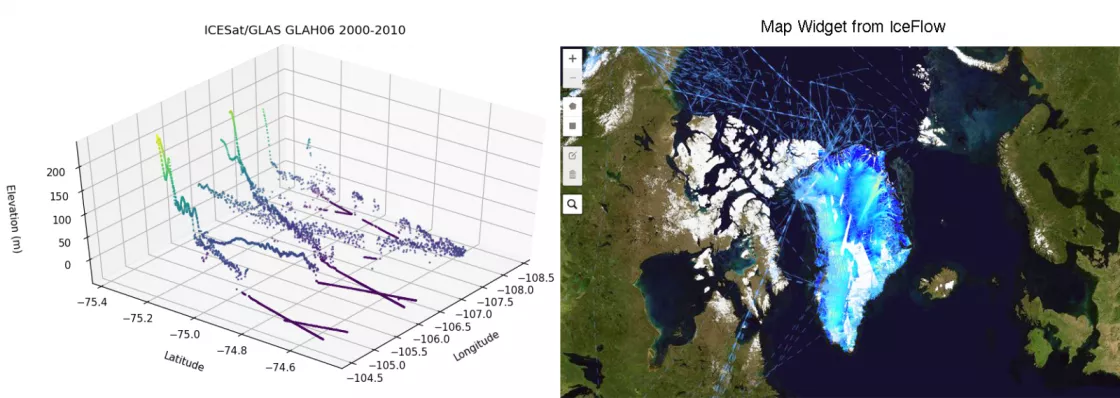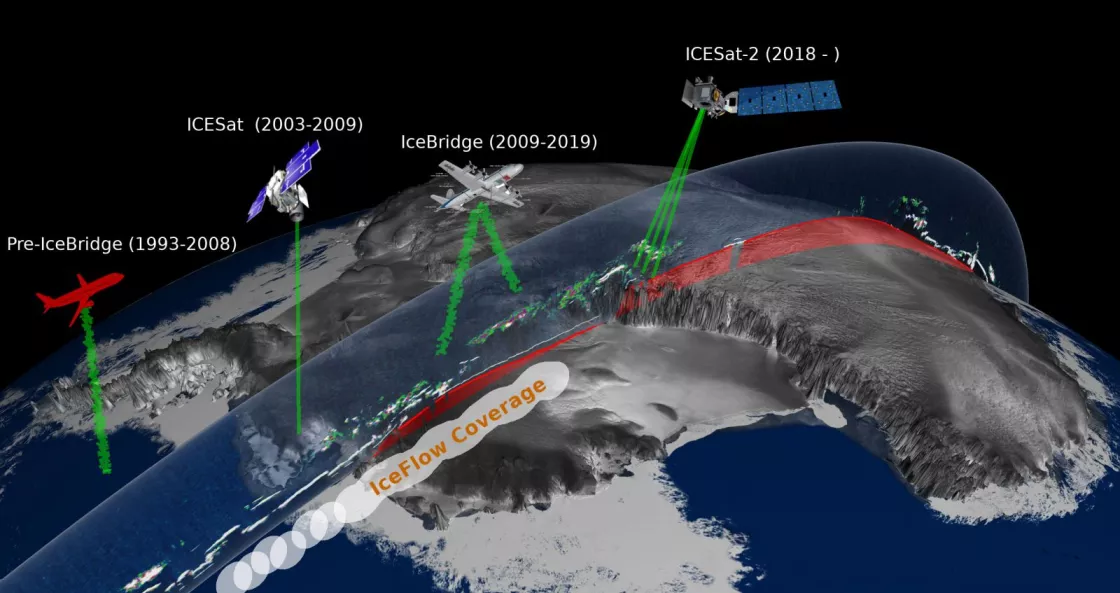By Agnieszka Gautier
Lidar instruments have been mapping the surface heights of Earth’s frozen regions—collectively known as the cryosphere—since at least 1993. From aircraft to satellites, these tools have revealed critical evidence of thinning Arctic sea ice, mass loss from the Greenland and Antarctic Ice Sheets, and shrinking glaciers. Yet, despite decades of data collection, researchers long faced a significant obstacle: the inability to easily compare lidar data across time due to differing formats and reference systems. .
To address this, the NASA National Snow and Ice Data Center Distributed Active Archive Center (NSIDC DAAC)
created IceFlow, an innovative tool that harmonized decades of NASA’s cryospheric lidar data into a unified interface. IceFlow allowed scientists to perform time-series analyses with ease, standardizing once-disparate datasets and dramatically lowering technical barriers to access.
As of June 11, 2025, IceFlow has been decommissioned due to technical dependencies. However, its contributions remain accessible through a standalone Python library , which remain valuable for those wishing to apply the same data transformation and harmonization methods on their own.
What IceFlow enabled
IceFlow was built around the Jupyter notebook interface, offering users the ability to visualize, filter, and order lidar data based on spatial and temporal selections. The tool catered to a wide range of user expertise: while experienced Python users could interact directly with the code and APIs, novice users could explore data through an intuitive map widget without needing to understand the complexities of the NSIDC’s Hermes API.
The tool gave researchers access to lidar data from major NASA missions, including:
- Airborne Topographic Mapper (ATM)
- ICESat (2003–2009)
- Operation IceBridge (2009–2019)
- ICESat-2 (launched in 2018)
While ICESat-2 data were not harmonized through IceFlow, they remained accessible via the NSIDC DAAC. The harmonization applied primarily to older missions, which had previously existed in multiple formats and reference systems.
Key features and innovations
- Jupyter notebook-based data interaction: IceFlow let users preview and process large datasets, eliminating the need for downloading unwieldy files.
- Coordinate corrections: As Greenland moved roughly one meter since 1993 due to tectonic shifts, IceFlow applied updates from three versions of the International Terrestrial Reference Frame (ITRF) to ensure geospatial consistency.
- Data subsetting and formatting: Users could zoom in on areas of interest, apply corrections, and select specific timeframes for analysis—making it possible to study long-term glacier or ice sheet trends with precision.
- Efficient data access: By converting legacy data into a point-cloud database and outputting it in modern formats like HDF5, IceFlow made older altimetry data far more accessible for new analyses.
Lasting value
Though no longer an active service, IceFlow set a new standard for how NASA DAACs can modernize legacy data and support reproducible science. It demonstrated how large, complex datasets could be streamlined, corrected, and presented in ways that support a broad range of research needs.
Researchers can still use the IceFlow Python library to harmonize and analyze cryospheric data independently. The original introductory Jupyter notebooks, accessible from the Python library, remain a valuable resource for learning about lidar datasets, integrating them into workflows, and applying geophysical corrections.
As the science community continues to work with massive Earth observation datasets, the legacy of IceFlow offers a roadmap for building accessible, sustainable tools for the future.
Access data through the NSIDC DAAC
NASA’s NSIDC DAAC manages, distributes, and supports a variety of cryospheric and climate-related datasets as one of the discipline-specific Earth Science Data and Information System (ESDIS) data centers within NASA’s Earth Science Data Systems (ESDS) Program. User Resources include data documentation, help articles, data tools, training, and on-demand user support. Learn more about NSIDC DAAC services.


